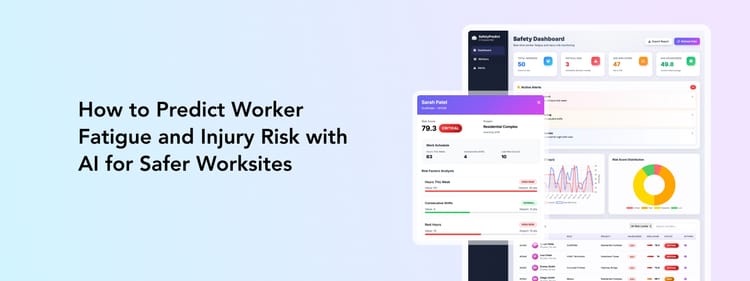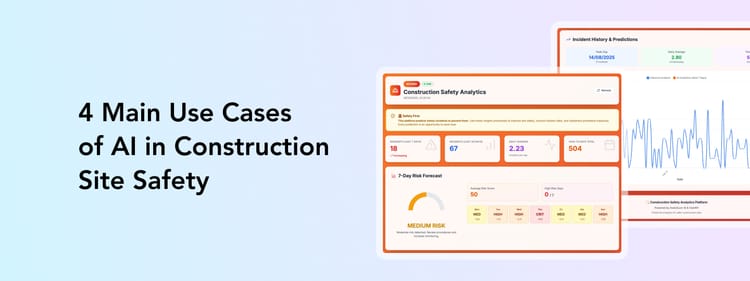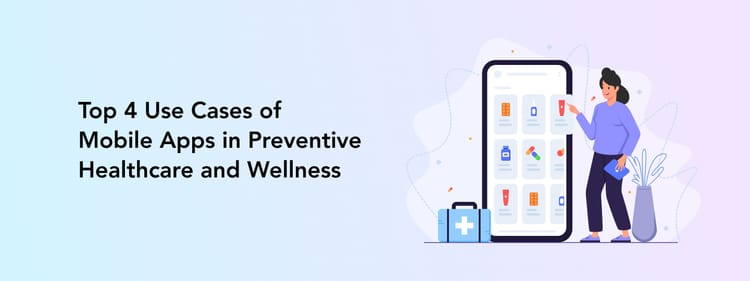Imagine traveling without your smartphone — sounds nearly impossible, right? No maps, no instant booking confirmations, and no restaurant suggestions. Thanks to internet access and specialized travel apps, our adventures are not only more convenient but also safer.
Introducing AI technology in the travel industry makes planning trips even easier: artificial intelligence can find the best prices, compose fast routes, and suggest activities based on the user's interests.
Consider this: 61% of travel companies have plans to implement AI within the next three years to enhance customer experience.
This article explores the top AI-based features for a travel app, explains how to build an AI travel app, and shares the cost estimation for such a solution.
What Are the Main Travel App Types
Before discussing how AI benefits travel apps, let’s have a closer look at what types of applications exist out there so we can then match the AI functionality with travel app features.
Flight and transportation booking apps
Traveling begins with booking your transportation, and flight aggregators are a top choice for finding the best deals. These apps allow users to compare prices, check availability across multiple airlines, and book flights directly — all in one place.
The convenience extends beyond flights. Whether catching a bus, train, or ferry, an all-in-one transportation app saves you the hassle of visiting multiple websites to compare options.
Plus, many of these apps can tailor routes based on user preferences, whether they prioritize the cheapest option, the fastest route, or a specific mode of transportation.
Popular examples include Skyscanner and Kiwi for flights and Omio and Rome2Rio for a comprehensive look at all transportation options.


Accommodation booking apps
After securing your transportation, the next step is to find a place to stay. Instead of endlessly browsing hotel websites, travelers turn to apps like Airbnb or Booking, which aggregate accommodation options and allow users to filter by date, price, type, and more.
These apps don’t just offer convenience — they also manage bookings automatically, saving users from direct communication with accommodations. Plus, they often handle conflict resolution and refunds, making them a reliable choice for both travelers and app owners, who benefit from commissions.
Perpetio's Residio is another example of a convenient accommodation booking aggregator.
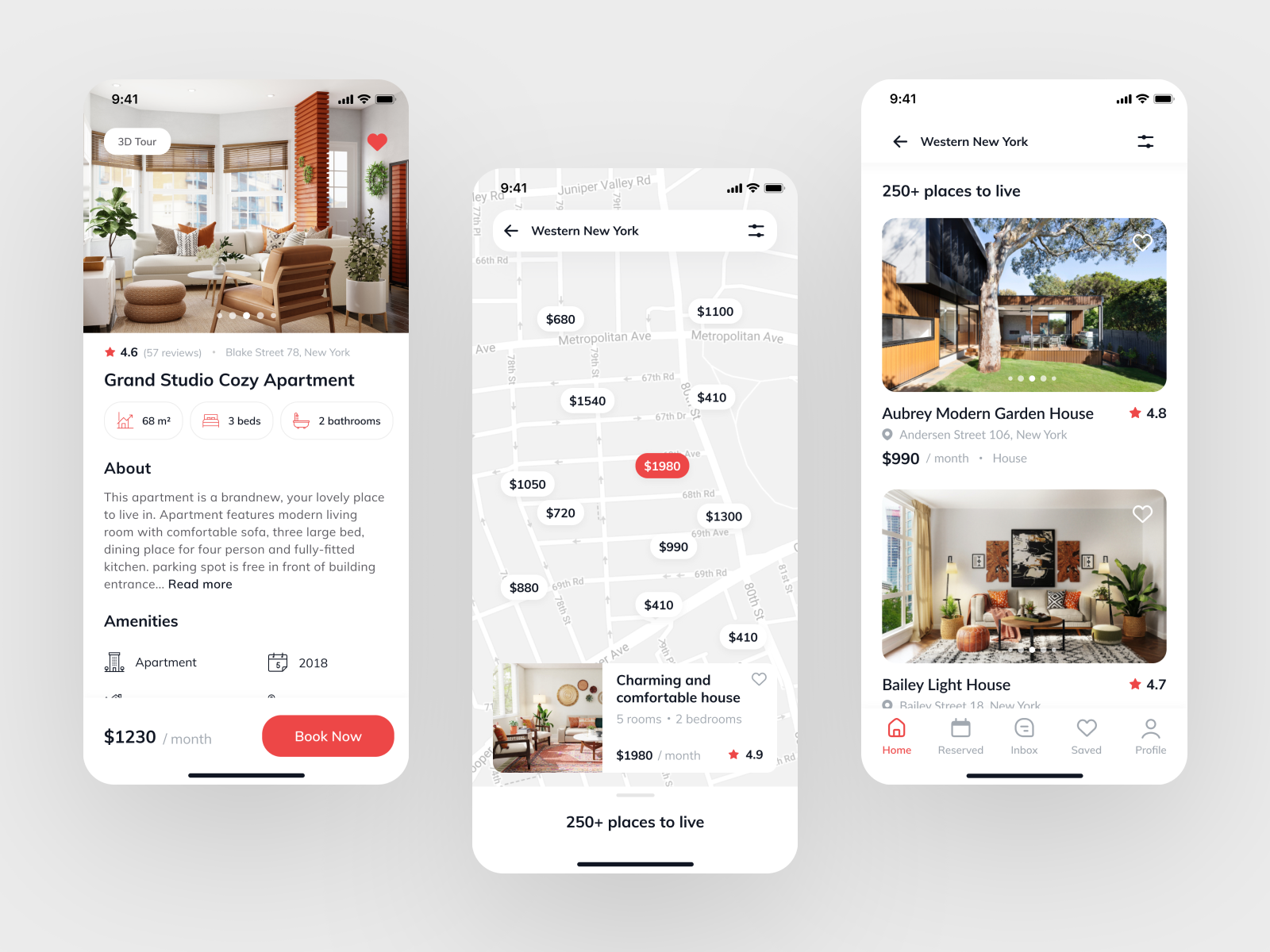
Travel guide apps
Once your transportation and accommodation are sorted, the next question is: What’s there to do? Travel guide apps provide instant answers, helping users discover must-see sites, hidden gems, and customized itineraries based on their interests.
Essential travel guides offer text-based information, but more advanced apps enhance the experience with audio tours or even augmented reality features, making exploration both informative and immersive.
Perpetio’s City Guide Gibraltar app is a great example of how a travel guide can provide valuable tips and landmark information to enrich your travel experience.
Trip and activity booking apps
For those looking to stand out in the crowded travel app market, a trip and activity booking app is a perfect choice. These apps cater to specific niches, whether it’s a particular region, type of trip, like active or romantic, and demographic, like solo travelers or families, offering users a tailored travel experience.
For instance, Perpetio recently developed an app focused on booking sports activity trips. Users can browse options like hiking or kayaking, view trip details, and secure their spot — all within a few taps.
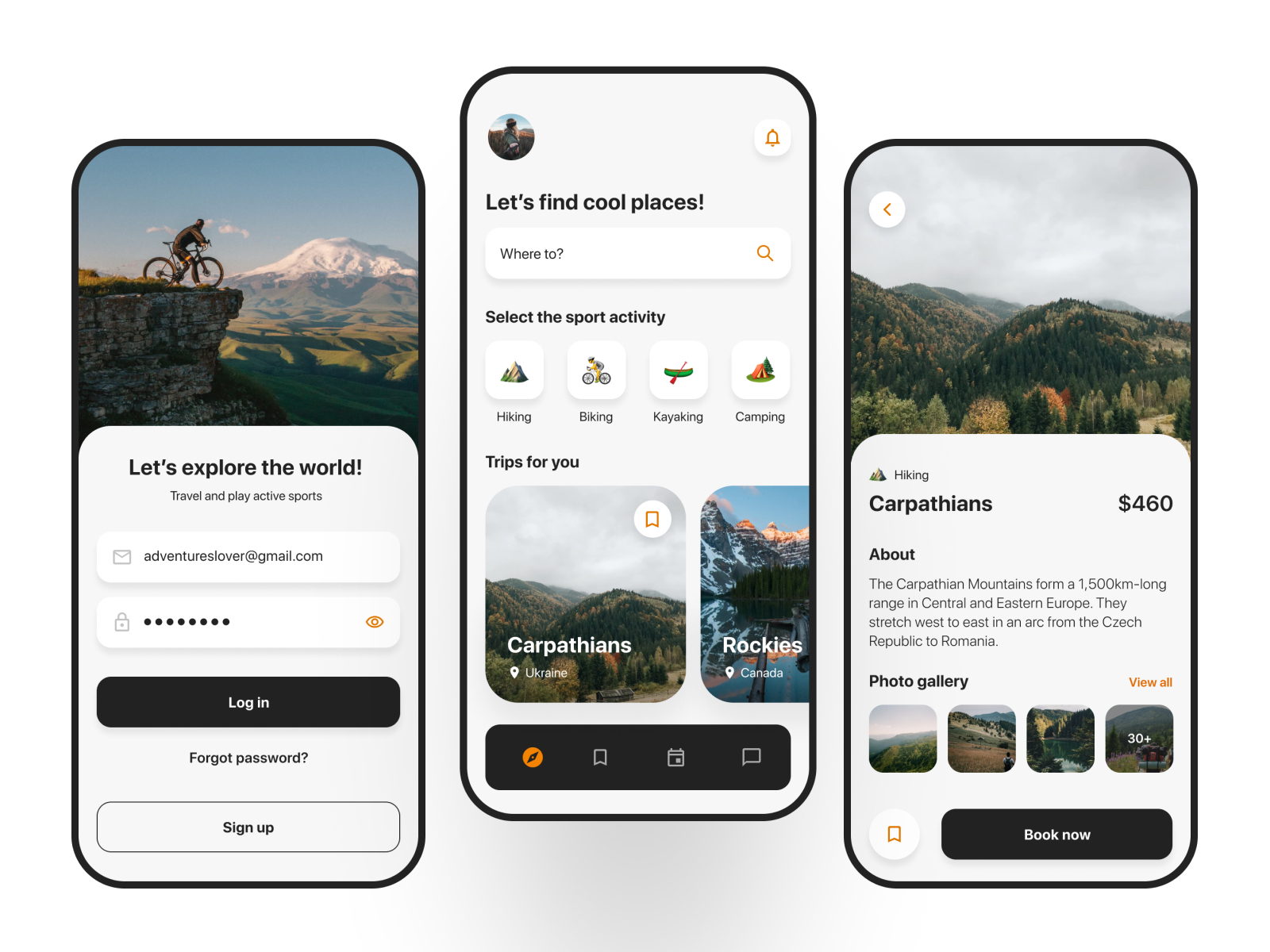
How AI is Improving Travel Experiences
AI is transforming the travel industry by bringing three key parameters to travel apps: automation, personalization, and intelligent decision-making. These innovations are revolutionizing how travelers plan, book, and enjoy their trips, making travel experiences more convenient and enjoyable.
Automation
AI-driven automation streamlines various processes within travel AI apps, improving user convenience. For instance, in flight and transportation booking apps, AI can automate the search and comparison of flights, trains, or buses, ensuring users find the best options quickly.
Similarly, accommodation booking apps benefit from automated booking systems that allow users to reserve rooms instantly without contacting the property directly. 75% of travelers surveyed would trust AI to help them with finding accommodation.
This automation extends to travel AI guides and activity booking apps, where artificial intelligence can automatically suggest itineraries, activities, or points of interest based on the user's preferences and past behavior.
Personalization
AI can personalize travel experiences, adjusting suggestions and options to each user's unique preferences. In travel apps, this means offering flights, accommodations, and activities that align with the user's interests, budget, and travel history.
For instance, an AI-powered travel guide app can recommend sightseeing spots, restaurants, and events that match a user's tastes, making their travel experience more enjoyable and relevant.
Similarly, AI can personalize trip and activity bookings by suggesting options that cater to specific demographics, such as adventure seekers, families, couples, or solo travelers.
Intelligent decision-making
AI brings a layer of intelligent decision-making to travel apps, helping users make more informed choices.
For example, in transportation booking apps, AI can analyze real-time data, such as traffic conditions or weather forecasts, to suggest the best travel routes or modes of transportation.
In accommodation apps, AI can predict price trends and advise users on the optimal time to book, ensuring they get the best deal.
Travel guides equipped with AI can offer real-time updates on attractions, helping travelers avoid crowded places or discover hidden gems.
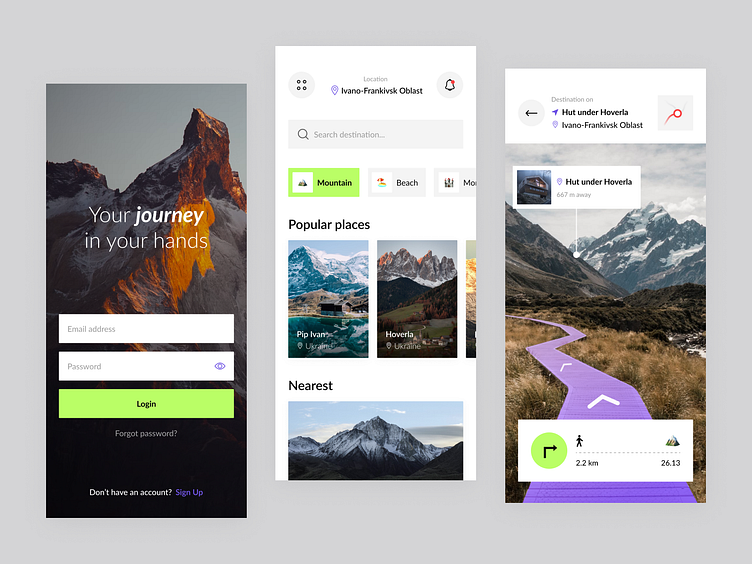
Top AI-based Features for a Travel App
Now that you know how AI is improving travel apps, let’s discover more precise applications of artificial intelligence in mobile travel solutions.
Based on our experience developing AI-enhanced travel apps, these are the most requested and useful AI features for AI travel apps.
Personalized recommendations
AI-powered travel apps can offer personalized recommendations that enhance the overall user experience. By analyzing a user's age, travel history, liked places, and set preferences, these apps can suggest nearby restaurants, attractions, travel ideas, and even entire itineraries tailored specifically to the user.
For instance, during onboarding, users can fill in their preferences, allowing the app to suggest relevant experiences right from the start.
Ticket booking aggregators can use AI to analyze previously booked tickets and send unique offers, such as sales or curated itineraries, that match a user’s preferences.
Travel planning and assistant apps can take past logged trips into account to suggest new activities that a user might enjoy.
Smart itinerary planning
AI can help with itinerary planning in ticket booking and trip planner apps by creating the most convenient and efficient travel routes.
For example, if a user needs to travel from point A to point B, an AI travel planner app can analyze available routes and suggest the best one based on various factors such as price, journey duration, number of connections, and even ecological impact. This ensures that users get the most out of their travel plans while staying within budget and personal preferences.
Moreover, AI can organize a complete travel experience, from selecting the best accommodations within a set budget and location to recommending restaurants and activities to fill the days.
This trip planner AI can serve as the core feature of a dedicated travel app or as an added functionality to existing apps like ticket booking or hotel aggregators.
Travel companion chatbot
A chatbot has become an indispensable feature for many apps, and it's especially valuable for travel applications where the sheer variety of options can be overwhelming. With flights, buses, hotels, and activities to choose from, users can find it challenging to select a setup that meets all their criteria without spending a significant amount of time.
An AI-powered chatbot can recognize human speech, provide personalized advice or even offer specific options on how to spend time at certain destinations.
Additionally, the chatbot can serve as a universal travel assistant, guiding users on which airlines fly to their chosen destination or suggesting how to reach a one-day trip spot during their vacation.
This makes the chatbot a versatile tool that can enhance a wide range of existing travel apps or stand alone as a solution for travelers in need of quick assistance during their journeys.
AI language translation
Language barriers are often a significant hurdle for travelers, but AI-enhanced translation features can be the perfect solution. Recent studies highlight that AI-powered language translation services in tourism can increase international bookings by 25%.
Unlike basic word-for-word translation tools, AI-powered translators can translate in context, drawing from extensive databases in both the source and target languages. This results in naturally sounding, commonly used phrases rather than direct translations.
Whether for basic communication, reading menus, or asking for directions, this feature can make any trip more accessible and enjoyable.
Basic Features Any Travel App Needs
As good as it might sound, a travel app cannot exist solely based on AI features. You will also need to work on some basic, must-have features.
Let’s take a look at a feature set your travel app can’t go without.
User registration and login
The journey begins with a seamless onboarding experience. Whether through email, phone number, or social media, users need a simple way to register and log in. This step is crucial for securing sensitive data like emails and payment details. Firebase authentication is a common tool for this purpose, ensuring that user information remains protected.
Search and filter options
Once logged in, users should be able to quickly find what they’re looking for. Whether it’s flights, accommodations, or activities, a robust search engine with filters like dates, locations, and price range is vital. This not only saves users time but also enhances their overall experience. Incorporating a travel API, such as Skyscanner, can keep your listings up-to-date and accurate.
Detailed listings
Providing comprehensive details for each listing is key to helping users make informed decisions. Whether it’s flight details, accommodation amenities, or trip itineraries, users expect to see everything from photos and reviews to maps and cancellation policies. For travel guides, offering both text and audio descriptions, along with integrated maps, can significantly enhance the user experience.
Booking system with secure payments
A smooth and secure booking process is a must. Whether your app is an aggregator or a direct booking platform, integrating reliable payment gateways and ensuring data security is non-negotiable. This ensures users can confidently complete their bookings without concerns about their personal information being compromised.
Push notifications
Keeping users engaged and informed is crucial. Push notifications can remind users of upcoming trips, special offers, or important updates related to their bookings. This feature helps maintain a connection with the user, ensuring they return to the app frequently.
Settings and onboarding
Personalization begins with onboarding, where users set their preferences. These preferences should be easily adjustable in the settings, allowing users to tailor their experience as they use the app. This customization makes the app more intuitive and user-friendly.
Starting with these foundational features ensures that your travel app is not only functional but also sets the stage for integrating advanced AI capabilities later on.
How to Build an AI Travel App Step-by-Step
“Okay,” you might say, “It all sounds good and useful, but how do I actually assemble an AI-based travel app?” Our answer is that it’s all pretty simple. Taken you have a reliable mobile app development partner on your side.
The company you collaborate with will take care of each step of the AI travel app development. Speaking of which, there are five basic steps:
Pre-planning and strategy development
Before diving into the development process, it’s essential to get your ducks in a row. This starts with understanding a few key aspects of your project, like what the app is supposed to do, who it’s for, and which platforms you want it to be on—whether that’s iOS, Android, or both.
You’ll also need to decide how you want to build the app. Do you want to go for native development, where the app is built specifically for one platform, giving you the best performance and access to all the device’s features? Or would you prefer cross-platform development, where a single codebase is used to create apps for both iOS and Android, saving time and cost?
It's also important to think about the design complexity of your app. You might opt for standard components, which are the usual buttons and menus that users are familiar with. These are easier to implement and require fewer updates. But if you want something unique, you could go for custom animations or even a fully custom design, where every visual element is tailored to your app. While custom designs make your app stand out, they also require more time and effort to create and maintain.
When planning your AI travel app, consider which features you want to include. Do you need a chatbot that can answer user questions in real-time? Or perhaps smart recommendations that suggest activities or restaurants based on user preferences? These features greatly enhance the user experience, but they also add to the complexity of development.
Finally, it’s wise to team up with a reliable development company that can guide you through this process. They’ll help you refine your idea to ensure it meets market needs and is technically feasible. By the end of this planning stage, you’ll have a clear roadmap that outlines what needs to be done, when it needs to be done, and how much it will cost.
Usually, you would have a call with a development team representative to compose your app's functional and non-functional requirements.
With this plan in hand, the next step is to move on to UI/UX design.
UI/UX design
Designing an AI travel app goes beyond aesthetics and begins with thorough research to ensure the product meets market needs and user expectations. First, it’s essential to understand current market trends and what your competitors offer. This research helps identify gaps that your AI features can fill.
Next, you must identify your target audience, understand their pain points and preferences, and develop user personas to guide the design process. User personas are potential users: the designer describes their lifestyle, pains, and requests for an app.
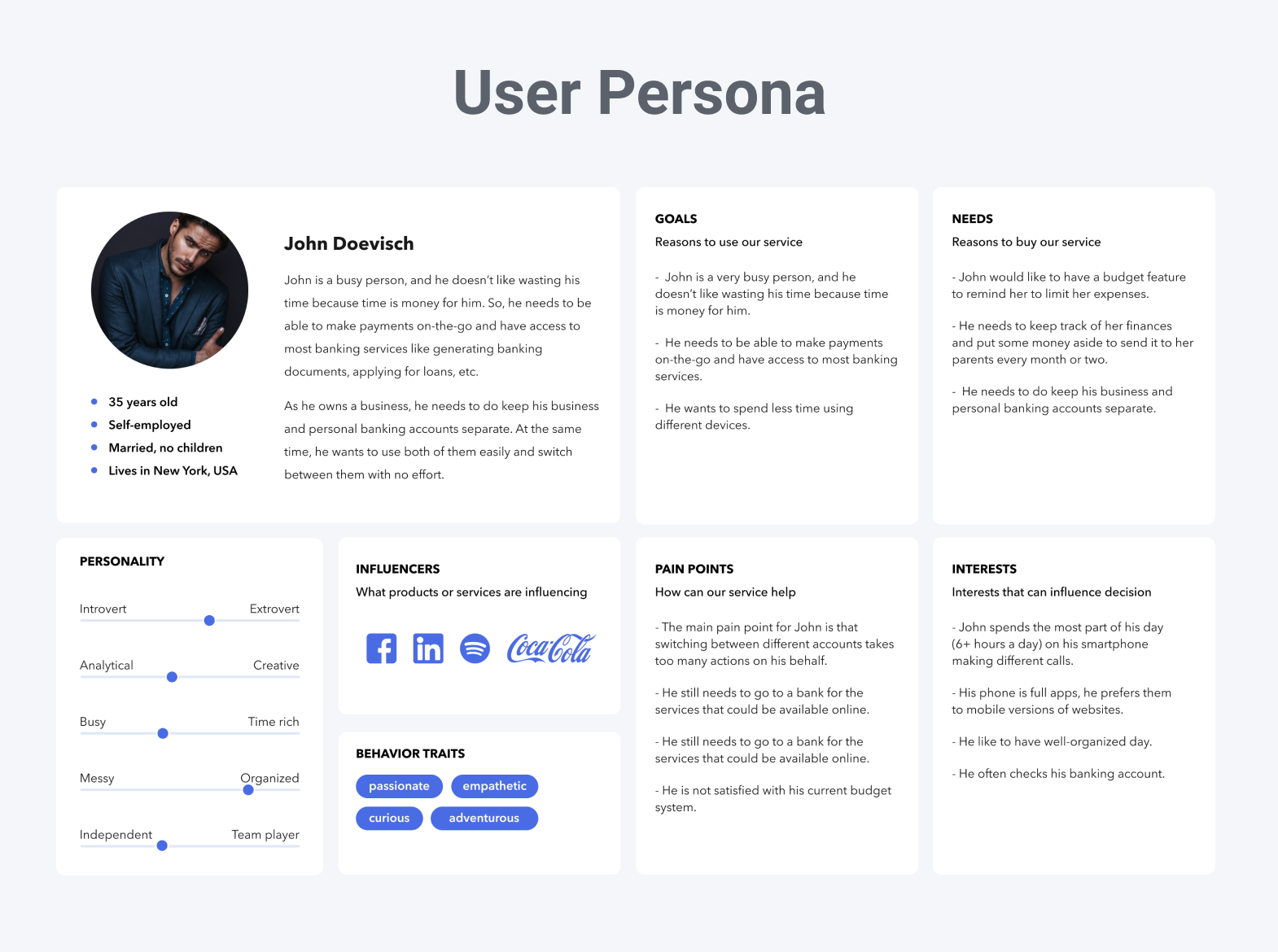
With this understanding in place, the design process typically begins with wireframing, which maps out the app's structure and flow.
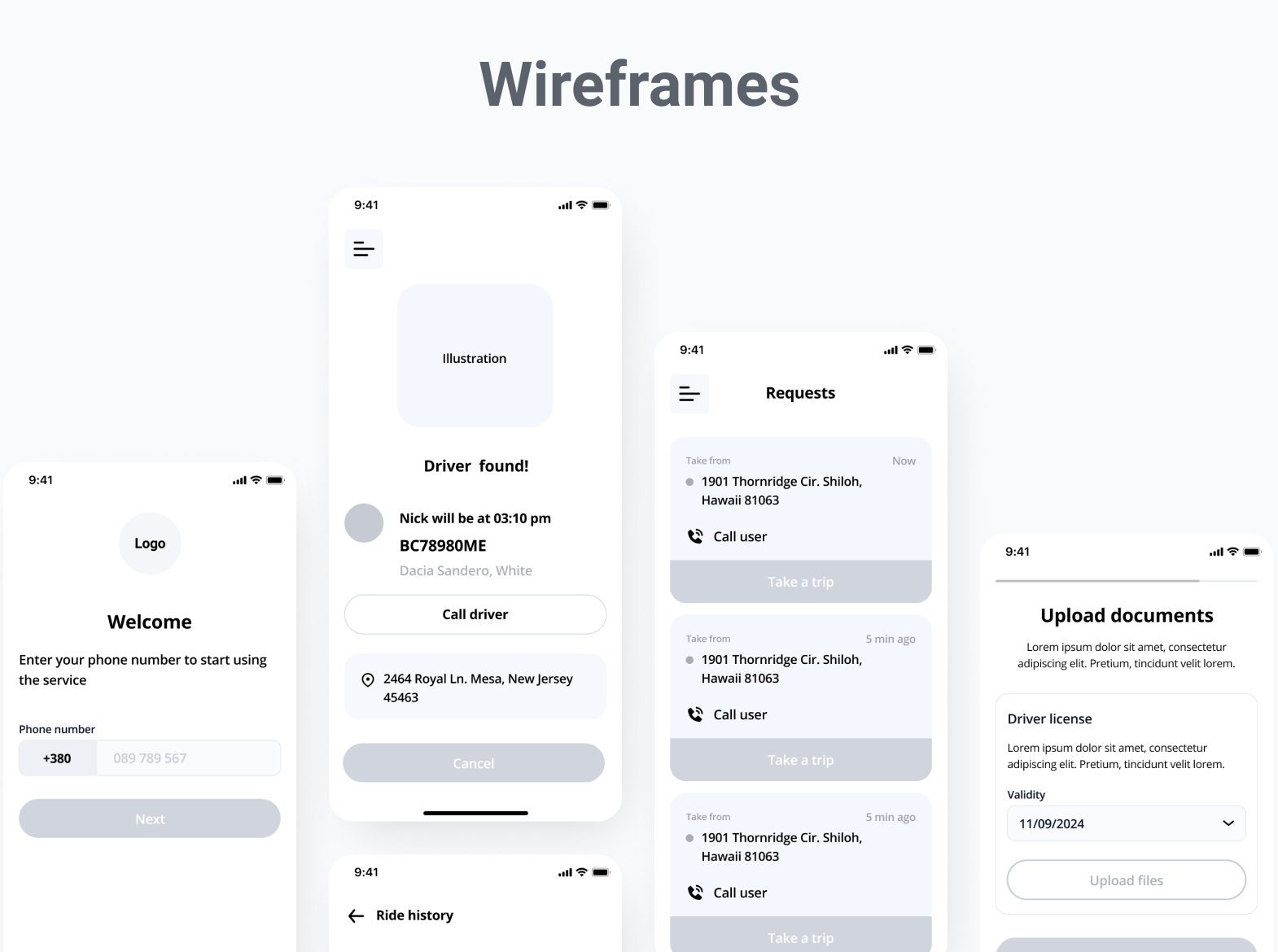
When designing for AI, it should be clear to the user that they are communicating with an AI, not a real person. Make sure to clarify your data usage policies too.
Once the user flow is mapped out, it’s time to decide on the app’s visual aesthetics, including fonts, colors, logos, and illustrations. To maintain consistency, we advise creating a style guide that can ensure the app’s branding is cohesive across all elements.
Mobile app development
With the design finalized, the development phase can begin. This stage involves translating the designs into a functional app by writing code, integrating APIs, and setting up the necessary infrastructure.
The choice of technology stack depends on your platform preference, whether iOS, Android, or cross-platform. Swift is commonly used for iOS development, while Kotlin or Java is preferred for Android, and Flutter or React Native can be used for cross-platform development.
One of the critical aspects of developing an AI travel app is integrating AI capabilities. For instance, we at Perpetio prefer using GPT API to integrate text generation capabilities for chatbots and more. For image generation, we offer our clients solutions based on Stable Diffusion.
Additionally, your AI travel app will likely need to pull data from various sources, such as flight booking APIs, hotel reservation systems, or local activity providers. Retrieval Augmented Generation (RAG) is a method that allows AI tools to get the information directly from selected sources, so the chatbot or similar solution can offer more precise results based on the travel resources you provide.
The development phase is typically iterative, with developers working feature by feature, ensuring each element is well-integrated and functions as intended.
Testing
Testing is one of the most important steps in making sure your app works well and gives users a smooth experience. This is where we check how well the app performs under different conditions. We’ll test things like how quickly the app loads, how much data it can handle, and how responsive it is, especially since AI features might need more processing power.
Security is another big focus. In a travel app, users are often sharing personal and sensitive information. We need to make sure everything is secure, including AI-driven interactions like chatbots. Protecting user data is a top priority.
We also want to make sure the app is easy to use. Usability testing lets us see the app from the user’s point of view. This helps ensure that AI features, such as chatbots, are simple to interact with and provide clear, intuitive instructions. By carefully testing the app, we can spot and fix any issues before it launches so users have a great experience right from the start.
Launch and maintenance
Once testing is done, your AI travel app is all set for launch. But launching the app on platforms like Apple’s App Store or Google Play Store involves more than just uploading the app. We need to make sure that all the necessary certifications are in place and that the app meets the guidelines of these platforms.
After the app goes live, the journey doesn’t stop there. It’s important to keep a close eye on how the app is performing, along with user feedback and satisfaction levels. This information is crucial for making improvements and adding new features to keep users happy. AI models, in particular, need regular updates and training to remain effective and relevant.
To stay competitive and keep users engaged, it’s essential to regularly update your AI algorithms and introduce new features. This ensures that your app continues to stand out in the market and meets the evolving needs of users.
By carefully following these steps, you’ll be on track to creating a successful AI travel app. At Perpetio, we’re with you every step of the way, guiding you through the development process to deliver a high-quality final product.
At Perpetio, we guide you through every phase, ensuring a smooth development process and a high-quality final product.
How Much Does It Cost to Create an AI Travel App
When planning the budget for your AI travel app, it's important to have a clear understanding of the costs involved. The price can range widely, from $15,000 to $50,000, depending on the complexity and features of the Minimum Viable Product (MVP). To get an accurate estimate, it’s best to consult with a development company that can tailor the calculation to your specific project, including the AI functionality you want to incorporate.
If you’re looking to get a rough idea of the budget yourself, start by considering the hourly rate of your development team. Rates can vary significantly based on the location and expertise of the company. For instance, outsourcing to a US-based company might cost you $80-100 per hour, while a reliable Ukrainian team with similar experience might charge around $35-50 per hour.
Let’s say you choose to work with a Ukrainian team that charges $30 per hour for design, development, and testing. Here’s an estimate of how many hours different features might take:
By multiplying the number of hours required by the hourly rate, you can get a rough estimate of how much you’ll need to invest in your AI travel app. Keep in mind that these are approximate figures, and the final cost will depend on the specific details of your project.
For example, creating an AI travel app with essential features like user registration, smart recommendations, and personalized itinerary planning would take around 750-1,800 hours. If you choose to work with a Ukrainian development company, the cost would range from approximately $30,000 to $100,000 per platform or for a single cross-platform application.
Consider Perpetio Your Trusted Partner
At Perpetio, we see the benefits that technologies like AI bring to businesses, enhancing both user satisfaction and productivity. We have experience developing all kinds of AI-based apps, like our AI companion—a friendly chatbot that answers questions on everything from science and relationships to travel tips. But we’re not just about writing code. We take a holistic approach, focusing on your business goals and crafting solutions that truly connect with your audience.
We’re here to support you every step of the way, making sure your app is not only well-built but also meets your needs.
Ready to bring your AI travel app to life? Let’s chat about how we can make it happen together!



